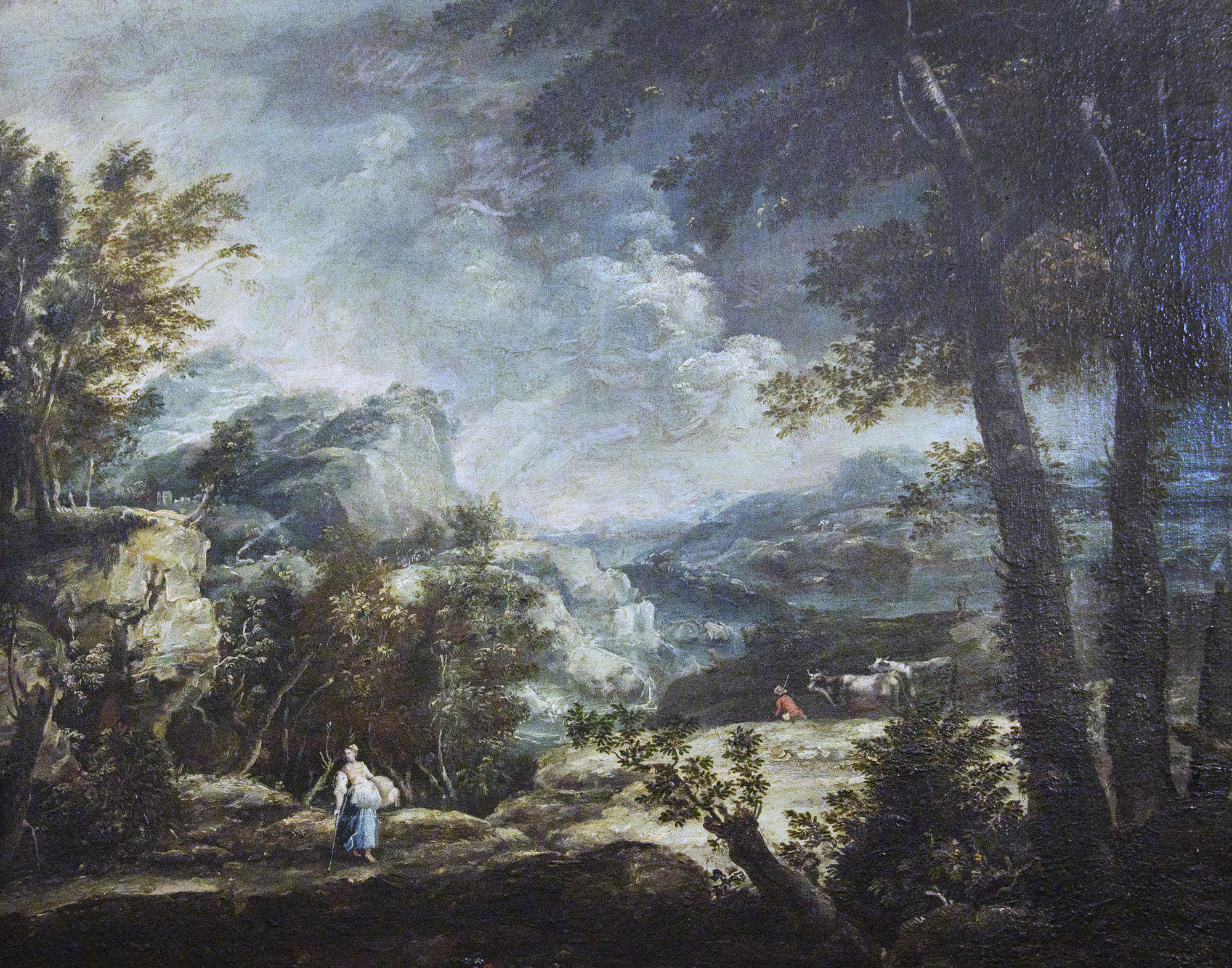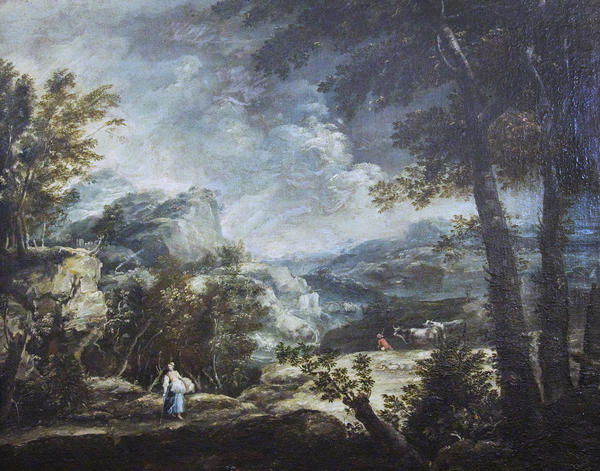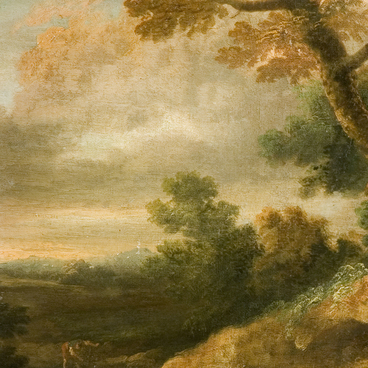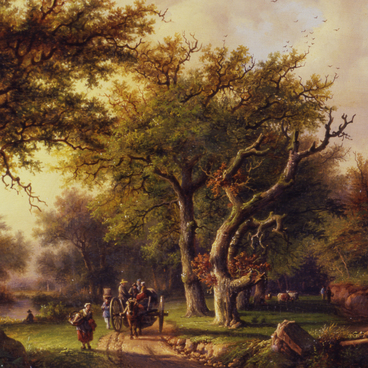This picture had long adorned the imperial family’s apartments. A paper sticker on the reverse side says that in 1827 it was in the parlour of Grand Duchess Elena Pavlovna; in 1916 in the parlour of Grand Duke Sergei Alexandrovich.
The Hermitage’s collection has a Landscape with a stream close to ours. In the inventory list of the Imperial Hermitage in 1797 these pictures had neighbouring numbers (1827 and 1828) as the works by the Venetian landscape painter Francesco Zuccarelli. The name of the Venetian Francesco Zuccarelli, the master of pastoral landscapes with animals, was a collective one.
All landscapes made in the idyllic spirit were ascribed to him. As a result of research the Landscape with a stream in the Hermitage was defined as a work by Carlo Antonio Tavella. This artist, like Zuccarelli, worked in the pastoral genre. Being born in ancient times pastoral periodically became a popular genre in literature, music, painting. Jacopo Sannazaro (1541) assured his readers that forest birds chirruping in the shadow of green leaves have more fascination to our ears than their city sisters sitting in golden cages, that simple melodies of shepherds are infinitely higher than ceremonial songs performed in royal palace. Carlo Antonio Tavella came to the idyllic genre being a mature man.
He was born in Milan in the family of a merchant, studied in the studios of various artists. He copied the landscapes by Dutch and Flemish painters, as well as those done by Poussin. In the 1690-s he became a pupil and follower of the Dutchman Pieter Mulier nicknamed Tempesta, the ‘singer of tempests and thunderstorms, ’ who was a man of great fame. The main themes in his pictures — raging sea and thunderous skies — were developed successfully in his landscapes by his pupil Carlo Antonio Tavella.
After the teacher had died he moved to Genoa, where gradually, under the influence of the Genoese school of painting, he drifted apart from his teacher’s motifs and worked out his own pastoral genre. By its motif and manner of painting the Landscape with Oxen should be referred to the last period of creative work by Carlo Antonio Tavella, who still repeated the stormy motifs of Tempesta back in the 1710-s. Works of the last period feature striving for fineness, tranquillity, soft and harmonic tones observed in our picture, too. He poeticizes calm, peaceful rural life. Such landscapes were in fashion and in demand in the 18th century. Possibly, landscapes by Carlo Antonio Tavella were purchased by Cesarevich (Crown Prince) Pavel Petrovich while making tours of Europe for the landscape originally was hanging in the parlour of his daughter, Elena Pavlovna.



